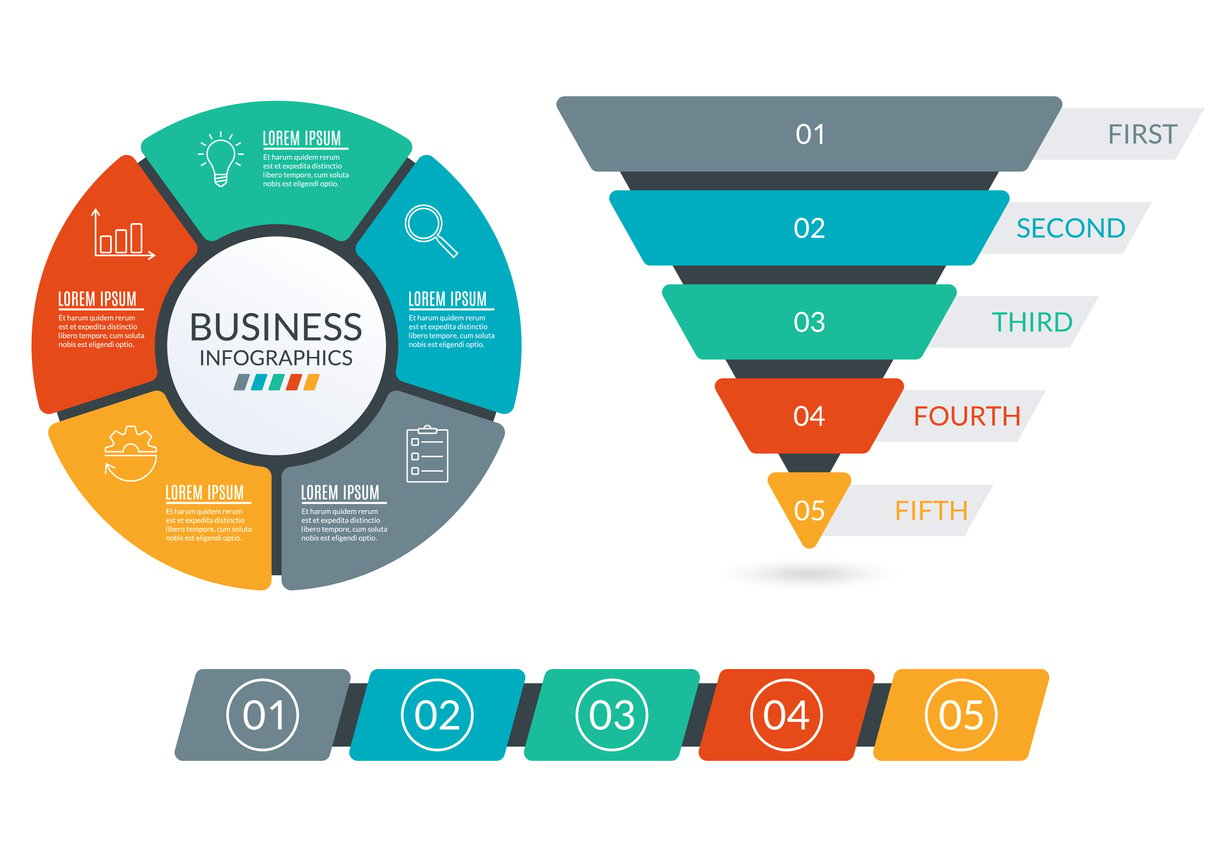
CV Meaning Explained: Insurance, SaaS, Business & Finance Use Cases
 Updated on
Updated on
 By Carlos Correa
By Carlos Correa
Carlos Correa
Carlos has been involved in the sales space for well over ten years. He began in the insurance space as an individual sales agent, managing teams as s...
learn more
Carlos Correa
Carlos has been involved in the sales space for well over ten years. He began in the insurance space as an individual sales agent, managing teams as s...
Table of Contents
Table of Contents
Acronyms are supposed to make life easier. But sometimes, they do the exact opposite. Take ACV, for example.
On the surface, it looks simple. Three letters, one meaning—right?
Not quite.
Depending on who you're talking to, ACV could mean Actual Cash Value in an insurance claim, Annual Contract Value in a SaaS contract, or All-Commodity Volume in a marketing report. Finance teams sometimes use ACV differently still, and in business valuation, yet another variation pops up.
That overlap creates a real problem. Imagine sitting in a meeting with sales, marketing, and finance leaders all at the same table.
Someone says, "We need to focus on ACV this quarter." The head of sales immediately thinks about growing deal sizes. The finance lead starts running through asset coverage metrics. Marketing? They're already talking about product distribution.
Everyone is working from their own definition, and instead of alignment, you get crossed wires, missed cues, and wasted time.
That's exactly what this article will give you.
We're going to break down ACV across the major contexts where it matters most:
- Insurance (Actual Cash Value): How claims adjusters use it, how it's calculated, and what you should watch for.
- Business Valuation (Annual Contract Value): Why ACV is central to forecasting and growth planning.
- SaaS (Annual Contract Value): How software companies define, track, and use ACV to drive revenue.
- Marketing (All-Commodity Volume): The role ACV plays in measuring retail distribution coverage.
- Finance (Asset Coverage Value and other uses): Less common, but important in lending and risk management.
By the time you're done with this ACV meaning guide, ACV won't be a source of frustration anymore. You'll know what it means in your industry, how to use it correctly, and how to avoid costly misunderstandings when working across teams.
ACV in Insurance (Actual Cash Value)

Homeowners often Google ACV meaning insurance when filing a claim, only to discover that actual cash value is very different from replacement cost coverage.
If you've ever filed an insurance claim for a car accident, storm damage, or a break-in, you've probably heard the term ACV thrown around. In the insurance world, ACV stands for Actual Cash Value, and it's one of the most important — and sometimes most frustrating — numbers you'll ever encounter in a claim.
What ACV Means in Insurance
In insurance, the ACV meaning is the amount your property is worth today, not what you originally paid for it. It's calculated by taking the replacement cost of the item and subtracting depreciation.
For example, if you bought a laptop three years ago for $1,500, and the insurer decides it has lost 50% of its value due to age and wear, the ACV would be $750. That's the payout you'd likely receive on your claim, not enough to buy the same laptop brand new, but what the insurer believes it's currently worth.
This calculation is designed to reflect "fair market value" rather than replacement cost. Insurers argue it's fair because you've already enjoyed years of use. Policyholders, on the other hand, often feel short-changed when the payout doesn't cover the cost of getting something new.
While formulas vary slightly between insurers, ACV is generally calculated as:
- ACV = Replacement Cost – Depreciation
Replacement cost is how much it would cost to buy the same or a similar item today. Depreciation accounts for age, condition, and sometimes even obsolescence (for things like electronics).
Let's say your roof is damaged in a storm. Replacing it would cost $20,000, but your roof is already 10 years into a 20-year lifespan. The insurer applies 50% depreciation, so the ACV payout would be $10,000.
This gap between replacement cost and ACV can be huge—and it's why understanding the term matters before you file a claim.
Common Pitfalls
One of the biggest frustrations with ACV in insurance is that many people don't realize their policy is based on Actual Cash Value until they make a claim. They assume "coverage" means they'll be able to replace their items at full cost.
Instead, they're handed a much smaller check and told depreciation was factored in.
Here are a few common pitfalls to watch out for:
- Assuming coverage means replacement. Unless you specifically have a Replacement Cost Value (RCV) policy, your claim will likely be paid based on ACV.
- Not knowing how depreciation is applied. Insurers may depreciate more aggressively on certain items like electronics or furniture, leaving you with less than expected.
- Accepting the first offer. Many policyholders don't realize they can negotiate an ACV payout if they feel depreciation was applied unfairly.
Don't get caught off guard. Take the time to understand your policy before a claim happens, and if you're ever in doubt, don't hesitate to ask your insurer for a detailed explanation. Knowing the ins and outs of your coverage can save you a lot of headache and heartache down the road.
Real-World Context
Consider this scenario: a homeowner's kitchen appliances are destroyed in a fire. The refrigerator, stove, and dishwasher were all purchased five years ago for a combined $6,000. Replacing them today would cost about $7,500. However, because the appliances are halfway through their expected lifespan, the insurer applies 50% depreciation.
The payout? Just $3,750.
For the homeowner, that's a nasty surprise. They can't replace the appliances for the payout they received, and unless they have savings or a replacement cost rider, they'll need to settle for cheaper models.
This is where clarity about ACV becomes essential. If the homeowner had understood the difference between ACV and RCV, they could have chosen a different policy upfront.
Now, let's get into the ACV meaning in different scenarios.
ACV in Business Valuation (Annual Contract Value)

In the world of recurring revenue, ACV doesn't have anything to do with insurance claims or property value.
Here, ACV stands for Annual Contract Value—a measure of how much revenue a contract brings in per year. It's a simple concept, but it plays a big role in forecasting, growth planning, and evaluating customer relationships.
What ACV Means in Business
Annual Contract Value is the annualized value of a customer contract, regardless of its total length. Subscription-based and service-based businesses use it to understand deal sizes on a yearly basis.
For example, if a company signs a three-year contract worth $90,000, the ACV is $30,000. Another contract might be $60,000 over two years, which equals $30,000 ACV as well. By annualizing, companies can compare these contracts side by side.
This consistency matters. Without ACV, businesses often get distracted by the "headline number" of total contract value (TCV). A $120,000 deal might sound great, but if it's spread over five years, the annual impact is smaller than a $60,000 two-year deal.
Why ACV Matters for Businesses
So why does ACV get so much attention in recurring revenue models? Because it directly affects how leaders plan for growth.
Some of the key benefits include:
- Forecasting revenue with clarity. By looking at ACV, companies can better estimate annual income streams.
- Evaluating sales performance. Sales leaders can track whether reps are closing higher-value deals or just chasing volume.
- Identifying growth opportunities. Comparing ACV across customer segments highlights which accounts are worth more long-term.
- Supporting investor discussions. ACV is often used as a shorthand metric in pitch decks and reports to show deal quality.
Without ACV, it's easy to overestimate revenue by looking only at total deal size. Annualized values keep things grounded.
Let's put this into numbers with three contracts:
- Contract A: $120,000 over 3 years → ACV = $40,000
- Contract B: $60,000 over 2 years → ACV = $30,000
- Contract C: $25,000 over 1 year → ACV = $25,000
On paper, Contract A looks like the winner at $120,000. But when you measure annual impact, it's not three times bigger than Contract B—it's just $10,000 more per year. This perspective helps companies set realistic expectations for growth.
ACV in SaaS (Annual Contract Value)

In software as a service, the ACV SaaS meaning is the yearly revenue generated from a customer's subscription contract. On the surface, it looks identical to business ACV, but SaaS companies rely on it differently.
Where a consulting firm might use ACV to compare retainers, SaaS teams use it to benchmark deal size, measure average customer value, and monitor whether they're moving into larger enterprise accounts or staying in the small-business space.
The distinction is subtle but important: in SaaS, ACV isn't just about revenue recognition. It's a growth compass.
Here's how SaaS teams use ACV:
- Customer Planning: ACV helps SaaS companies segment customers. A client with $100,000 ACV gets a dedicated account manager, while one with $5,000 ACV might be handled by a self-service portal.
Revenue Growth: Tracking average ACV reveals whether the company is successfully upselling or expanding into higher-value markets. If ACV is rising, it means bigger deals are being closed. - Forecasting: By multiplying average ACV by the number of expected new customers, SaaS companies can project growth.
- Investor Communication: ACV is a shorthand metric often used in pitch decks to show traction and prove the company can scale.
Let's look at two SaaS contracts:
- Customer A signs a three-year contract worth $150,000 total. ACV = $50,000.
- Customer B signs a one-year contract worth $60,000 total. ACV = $60,000.
Although Customer A's contract looks bigger at first glance, Customer B actually contributes more on an annual basis. This perspective matters for sales teams, customer success planning, and investors alike.
ACV in Marketing (All-Commodity Volume)

If you step out of SaaS and into consumer packaged goods (CPG) or retail marketing, The ACV marketing meaning takes on yet another definition. Here, ACV stands for All-Commodity Volume, and it's all about measuring distribution, not contracts or cash value.
All-Commodity Volume is a metric that shows the percentage of total retail sales volume where a product is available. In other words, it tells you how widely your product is distributed across stores, weighted by sales.
For example, if your product is carried in stores that together account for 70% of all retail sales volume, your ACV is 70%.
This is different from just counting the number of stores. A placement in a high-volume retailer like Walmart or Target carries more weight than a placement in a small local chain. ACV takes that into account.
Marketers rely on ACV because it helps them:
- Assess market coverage: Are products available in the stores that matter most?
- Plan channel strategy: Should budget go toward expanding into higher-volume retailers?
- Measure brand presence: ACV provides a way to compare distribution strength against competitors.
Without ACV, marketers might celebrate being in thousands of stores but overlook the fact that those stores only account for a small share of total sales volume.
Imagine two beverage brands:
- Brand A is in 5,000 stores, representing 40% ACV.
- Brand B has 2,500 stores, including Walmart, Kroger, and Costco, which represent 65% of ACV.
Even though Brand A is in more stores, Brand B actually has stronger distribution reach. This insight helps Brand B's marketers make smarter decisions about where to invest.
ACV in Finance (Asset Coverage Value and Other Uses)
Finally, there's the ACV finance meaning—where ACV shows up in yet another form, though less commonly than in insurance, SaaS, or marketing. In this context, ACV can stand for Asset Coverage Value, typically used in lending and investment scenarios.
What It Means in Finance
In finance, ACV (Asset Coverage Value) refers to the measure of a company's ability to cover its debts with its assets. It's often used in the context of asset-backed loans, credit assessments, or investment risk evaluations.
For example, if a company has $10 million in assets and $5 million in debt, the asset coverage ratio is 2.0—meaning assets can cover debts twice over. While not as commonly referenced as insurance or SaaS ACV, it's still important in contexts where lenders or investors need reassurance about solvency.
Why It's Less Common
Unlike insurance or SaaS, finance already has a wide array of ratios and metrics (debt-to-equity, liquidity ratios, current ratios, etc.). ACV as Asset Coverage Value, isn't always top of mind, but you may encounter it in more technical lending discussions or in contract language.
Comparison Table: ACV Across Industries
With so many different uses of ACV, it helps to see them side by side.
The table below compares the main definitions, industries, and formulas at a glance.
|
Industry |
ACV Meaning |
Formula/Explanation |
When It's Used |
|
Insurance |
Actual Cash Value |
Replacement Cost – Depreciation |
Calculating property or auto claim payouts |
|
Business Valuation |
Annual Contract Value |
Total Contract Value ÷ Number of Years |
Comparing deal sizes in recurring-revenue businesses |
|
SaaS |
Annual Contract Value |
Annualized subscription contract value |
Customer segmentation, inside sales performance, investor reporting |
|
Marketing |
All-Commodity Volume |
% of total retail sales volume where product is sold |
Measuring distribution reach across retail channels |
|
Finance |
Asset Coverage Value |
Assets ÷ Debt (simplified) |
Evaluating solvency in lending or asset-backed financing |
Having all definitions in one place makes it easier to clarify which ACV you're talking about. Next time someone mentions ACV in a meeting, you'll be prepared to ask: "Are we talking about insurance ACV, SaaS ACV, or marketing ACV?"
That small step avoids confusion and ensures everyone's aligned.
Why Industry Context Matters

Acronyms are supposed to save time, but they only work when everyone agrees on what they mean. With ACV, that's rarely the case. Because the same three letters stand for very different things across industries, conversations can quickly veer off track.
When ACV isn't clarified, the consequences are more than just a few puzzled looks; it can:
- Derail projects
- Misalign teams
- Even cause financial mistakes
To see why, let's walk through a few scenarios.
Imagine a cross-functional business meeting where sales, marketing, and finance leaders are all present. The sales team proudly announces that their "ACV" grew 30% this quarter. To them, that means they're closing larger deals. But the marketing manager immediately starts wondering why product distribution hasn't expanded. Meanwhile, finance hears ACV and thinks about asset coverage ratios.
The result of this is:
- Three parallel conversations
- None of them connected
- Zero alignment on what "success" actually looks like
Or picture an insurance dispute. A homeowner files a claim after storm damage to their roof. They assume ACV means they'll receive enough money to buy a brand-new replacement. When the insurer explains that ACV means "actual cash value," factoring in 10 years of depreciation, the payout is far less than expected. Frustration builds, trust erodes, and the homeowner is left scrambling to cover the gap.
Then there's the investor pitch gone wrong. A SaaS startup confidently tells potential backers that its ACV is $100,000. They mean Annual Contract Value, a metric that shows the size of its average deal. But the investors interpret ACV as ARR (Annual Recurring Revenue), thinking the startup has far more recurring income than it actually does. That misstep undermines credibility and could cost the startup a funding round.
Each of these situations starts with the same mistake: assuming that everyone shares the same definition of ACV.
They don't.
And unless you make it clear, you risk:
- Confusion
- Disappointment
- Financial loss
So how do you prevent this? By taking a proactive approach to context.
Here are a few ways to keep ACV crystal clear:
|
Tip |
Explanation |
|
Spell it out first |
The first time you use ACV in a meeting or document, write or say the full phrase: Actual Cash Value, Annual Contract Value, All-Commodity Volume, etc. |
|
Clarify your audience |
If you're speaking to insurers, ACV almost certainly means Actual Cash Value. If it's a SaaS team, they'll expect Annual Contract Value. Marketing or retail professionals will think of All-Commodity Volume. |
|
Be consistent |
Once you define ACV in your context, don't switch meanings midstream. Consistency builds trust and prevents slip-ups. |
|
Anticipate confusion |
In cross-industry conversations, get ahead of the ambiguity. A quick "Just to clarify, by ACV I mean Annual Contract Value" saves everyone time. |
The real value of understanding ACV isn't just knowing what it stands for; it's knowing how to use it with precision. When you get the context right, you create alignment, strengthen communication, and make sure your entire team is working toward the same goals.
How to Determine "Your" ACV Meaning
If you're still not sure which ACV applies to you, the good news is that figuring it out is simple. It all comes down to industry, purpose, and consistency. Think of it as a short checklist that helps you land on the right definition every time.
Here's how to do it:
Identify Your Industry
Start with where you operate. If you're in insurance, ACV almost always refers to Actual Cash Value. In SaaS or subscription-based businesses, it's Annual Contract Value. In retail marketing, it's All-Commodity Volume. Finance? It's Asset Coverage Value.
Clarify Your Goal
Ask yourself: what am I trying to measure? If it's claim payouts, you're in the insurance camp. If it's deal sizes or forecasting, you're in SaaS or business. If it's shelf distribution, you're in marketing. If it's debt coverage, you're in finance.
Define ACV Explicitly
In every important document, presentation, or report, spell out the full phrase before using the acronym. For example: "Annual Contract Value (ACV)." Once you've defined it, you can shorten it to ACV for the rest of the document.
Educate Your Team
Don't assume everyone knows the differences. Take the time to explain ACV in context to your team, especially if you work across departments or industries. Clear definitions prevent confusion before it starts.
How to Find Out Your ACV Meaning - Final Thoughts
The solution is clarity.
When you understand the acv meaning and take the time to spell them out in your own context, you turn a confusing acronym into a powerful tool. Instead of guessing, you'll know whether you're talking about payouts, contracts, distribution, or assets.
And when your team knows it too, you'll avoid friction and build alignment around what really matters.
So here's your call to action:
- Don't assume. Always clarify which ACV you're talking about — whether it's Actual Cash Value, Annual Contract Value, All-Commodity Volume, or Asset Coverage Value.
Spell it out. In meetings, reports, and contracts, write the full term on first use, then shorten to ACV. - Educate your team. Share the differences so everyone knows the context and can use ACV with confidence.
- Apply it with purpose. Use ACV as the lens it's meant to be — for accurate insurance claims, smarter SaaS forecasting, sharper marketing distribution, or stronger financial evaluations.
And if you're in SaaS or sales, take the extra step of weaving ACV into your CRM processes. Tools like Ringy don't just help you track customer contracts; they let you integrate ACV into your sales strategy, forecast with precision, and build post-sale workflows that drive growth.
Learn more by signing up for a trial to see exactly how our software is changing sales globally.

Skyrocket your sales with the CRM that does it all.
Calling? Check. SMS? Check. Automation and AI? Check. Effortlessly keep in touch with your customers and boost your revenue without limits.

Take your sales to new heights with Ringy.
Sales in a slump? Ringy gives you the tools and flexibility you need to capture leads, engage with them, and turn them into customers.
Subscribe to Our Blog
Enter your email to get the latest updates sent straight to your inbox!
Categories
Related Articles




































































































